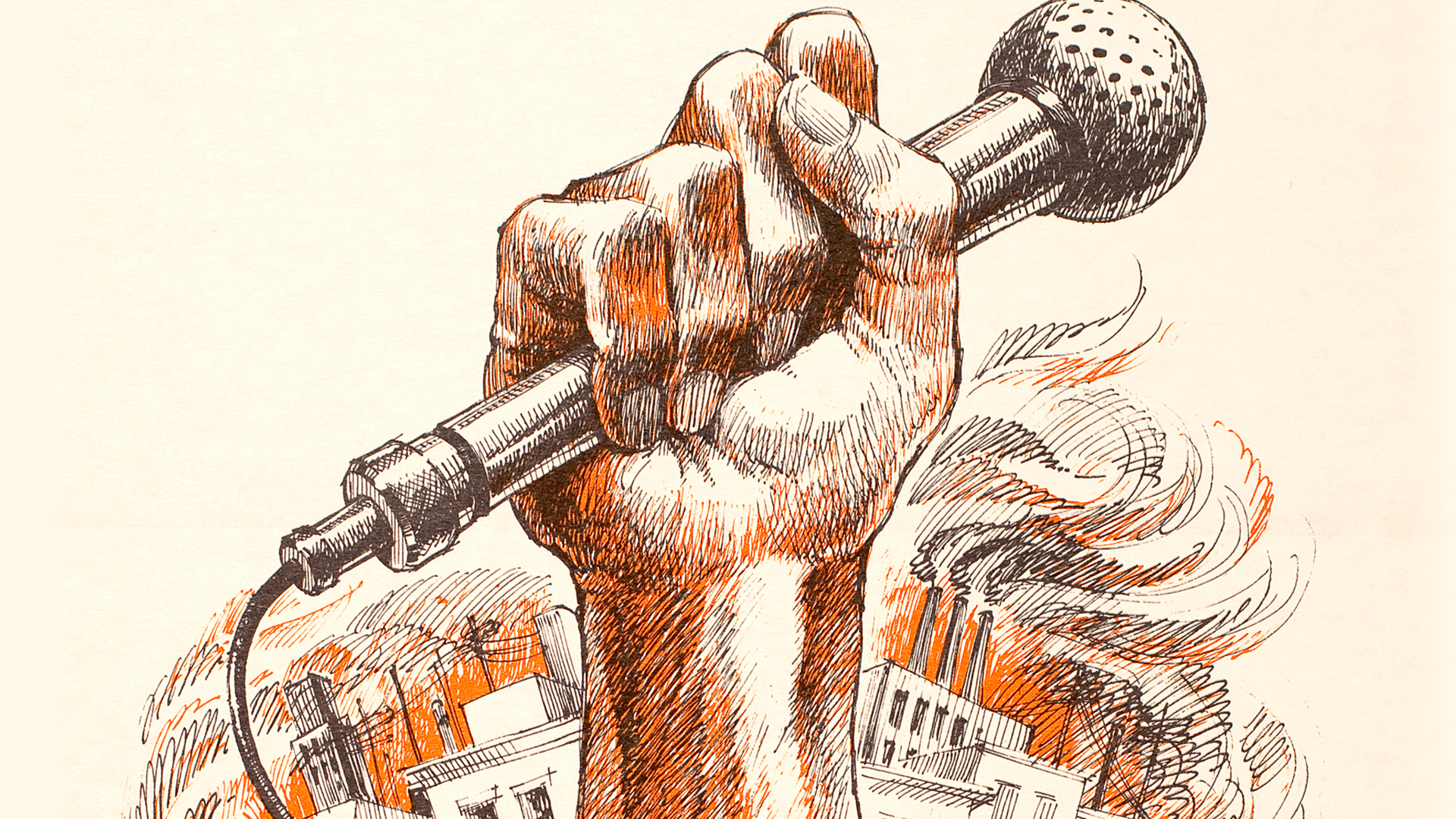
By David Rovics
Socialism and Democracy Journal
August 2017
California native, veteran musician, philosopher and revolutionary Mat Callahan covers a lot of ground in his new book about the tumultuous decade of 1965–75 in the San Francisco Bay Area. As an anti-establishment musician who did not live through that period in any meaningful way (I was born in 1967), I was especially enthralled by Callahan’s critique of the corporate music industry, and the years during which it attempted to understand the musical insurgency that was taking place – and to figure out how to control and make immense profits from it.
As Callahan recounts, the music industry was ultimately mostly successful in its efforts. But it took years, and the story of this struggle is a fascinating one. Looking at the era from afar, mostly through the distorted lens of the corporate media’s distillations of the period, it is impossible to understand the renaissance and resistance that was taking place, and how tied-in music was to the social movements of the day. So Callahan’s book is a much needed, as well as clearly exhaustively researched, retelling and repositioning of an important story.
For years, a battle was being waged on the streets of the Bay Area and indeed in many other parts of the US, Canada and elsewhere, over what were seen by many people involved as fundamental questions about music, and about society more broadly. Who really creates it? Who owns it? Who should profit from it? Did Jefferson Airplane, Quicksilver Messenger Service, and Sly and the Family Stone really write those songs, or were they more like the conduits, the musical expression of the interracial, cross-class, militant social movements coalescing in that part of the world at that time?
As Callahan explains, there was a pervasive understanding among many people there then that the new, mold-breaking, tribal music scene was itself a revolutionary phenomenon. What was often pejoratively referred to by media and politicians as the infantile behavior of spoiled children – involving sexual openness, mind-expanding drugs, and very loud music – was itself a sort of insurgency. On top of that, quite a bit of the music from the aforementioned bands, among many others, was explicitly political – anti-war, anti-racist, and in favor of good things, things that flew in the face of the bombing raids in Vietnam and police violence at home – dangerous, unsettling ideas like peace and love.
So then, what may appear to future or far-away eyes very odd developments – such as thousands of people regularly laying siege to events featuring their favorite bands on the basis that these events were not free, and should be – start to make perfect sense. This was a people’s movement, this music came out of the movement, and the movement involves holding massive, free events – as it very regularly did, throughout the period, in the parks of San Francisco, Berkeley, and elsewhere. The prevailing attitude was, sure, the musicians need to make a living, too. But not by doing these exclusive events organized by “hip capitalists” like Bill Graham.
In response to this new, genre-smashing music scene, the music industry that dominated things like national distribution of records had to make significant adjustments in order to eventually ride this bull. For a time, for these bands, the industry developed a much more tolerant orientation towards things like bands writing their own songs, producing their own records, recording them in San Francisco rather than in LA or New York, under their own musical terms, with 11-minute-long songs if they wanted, saying what they wanted, radically political or not. For a time, it was OK to be a black musician playing psychedelic music, or for a band to be neither “rhythm and blues” nor “rock and roll” – code words created by the music industry to racially segregate the music. Now it became possible for a popular band to be – gasp – interracial.
Ultimately, the music business largely returned to its pre-insurgency model of doing business, with more or less rigid musical genres, with pop stars cultivated by record labels and told what to record, with any- thing overtly political once again being treated as a novelty, rarely to be promoted by the record labels. But the cultural renaissance of this period had a far-reaching impact that is still felt today – though often not consciously, for people under the age of 50. If enough people read this book, that impact will become stronger, and better understood.






